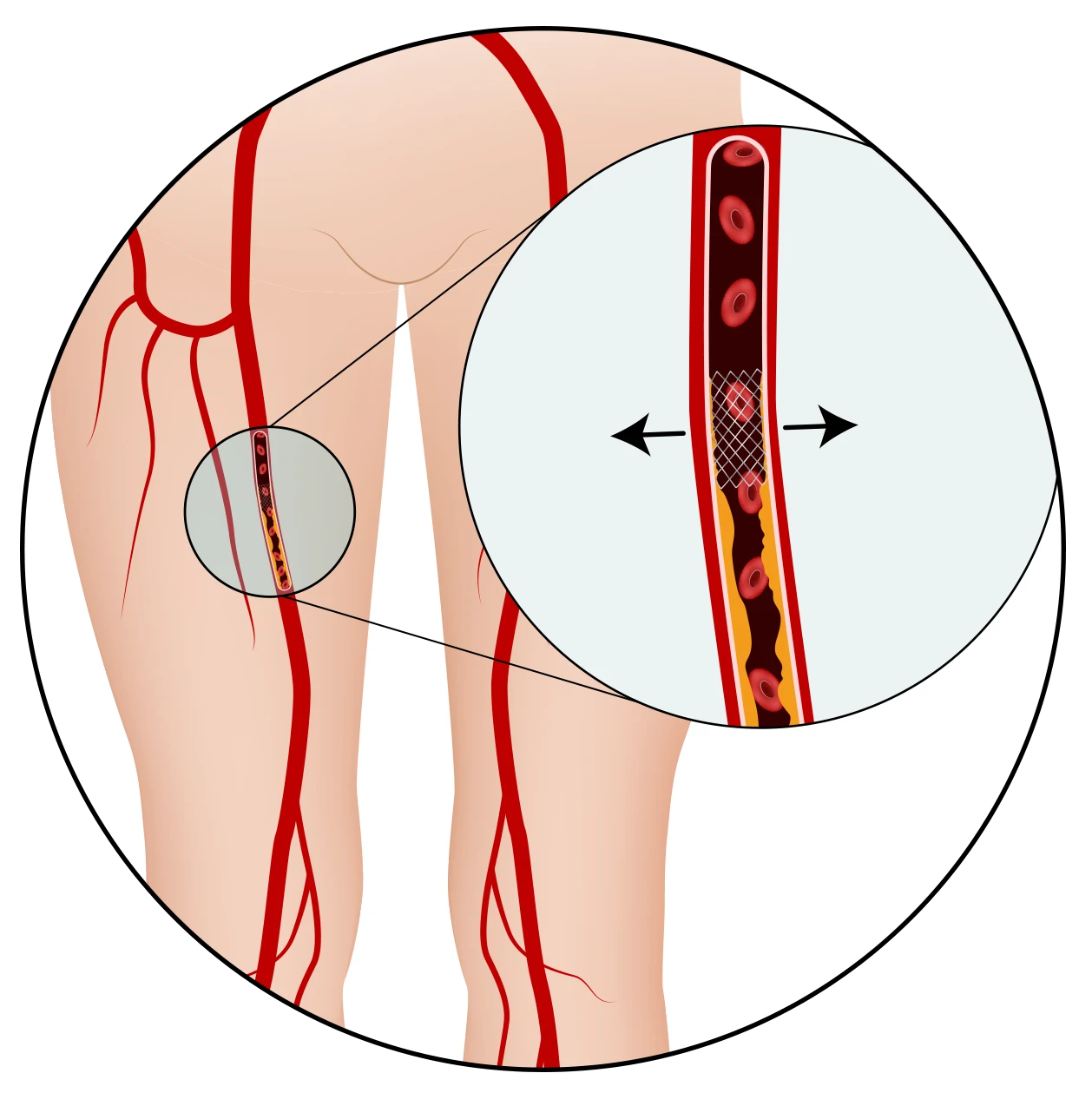Peripheral Arterial Disease Treatment
Peripheral artery disease (PAD) occurs when plaque, made up of fats and calcium, builds up in the arteries of the legs or arms, narrowing them and restricting blood flow. This condition, known as atherosclerosis, can significantly impair circulation in the affected limbs. PAD is more common than many realize and can become serious if left untreated, potentially threatening the health of the limb. People with PAD often have similar plaque buildup in the arteries supplying the brain, heart, and other organs. Risk factors include smoking, high cholesterol, high blood pressure, diabetes, and a family history of heart disease, PAD, or stroke.


Signs and Symptoms of PAD
In the early stages, PAD may not show any noticeable signs, but as it progresses, symptoms often develop in the legs, where blood flow is most affected. The most common symptom is pain or cramping in the legs while walking, known as claudication. This discomfort typically worsens with activity and eases with rest. In more advanced cases, pain may occur even at rest, especially when the leg is elevated. Other signs to watch for include:
- Hair loss and shiny skin on the legs
- Slow or poorly healing wounds, especially on the ankles, feet, or toes
- Coldness or discoloration in the affected limb
- Numbness or weakness in the leg
- Erectile dysfunction
- Weak or absent pulses in the legs
- Slow-growing toenails or muscle atrophy
How is PAD Treated?
Treatment for PAD depends on its severity. Initially, lifestyle changes like quitting smoking, increasing exercise, controlling blood sugar, improving diet, and managing cholesterol and blood pressure may be recommended. For more advanced cases, minimally invasive or surgical interventions may be needed. At Colorado Advanced Endovascular, we specialize in minimally invasive treatments for PAD.
Minimally Invasive Treatment for PAD
One of the primary treatments we offer is called arteriography (or angiography). This procedure, done under light sedation, involves “taking pictures” of the arteries to identify any blockages or narrowings. Using a small catheter, we guide a contrast dye into the arteries, which allows us to see the blood flow on an X-ray camera. The entry point for the catheter is usually in the groin, but other sites like the wrist, foot, or ankle may also be used.
If a blockage or significant narrowing is found, we can address it with one of the following techniques:
Balloon Angioplasty: A small balloon is inflated inside the artery to widen the narrowed area.
Atherectomy: A specialized device is used to physically remove plaque from the artery walls.
Stent Placement: In some cases, a stent (a small cylindrical mesh) is placed inside the artery to help keep it open and maintain blood flow.
What to Expect After PAD Treatment
These procedures usually take between one and three hours, depending on complexity. Afterward, patients are required to rest for about two hours before being discharged with instructions for recovery. We recommend avoiding strenuous physical activity or heavy lifting for a week following the procedure. A follow-up visit and imaging will be scheduled to ensure the treatment was successful.
Request an appointment
Schedule a consultation with our expert interventional radiology team to learn more and find out if this innovative treatment is right for you.